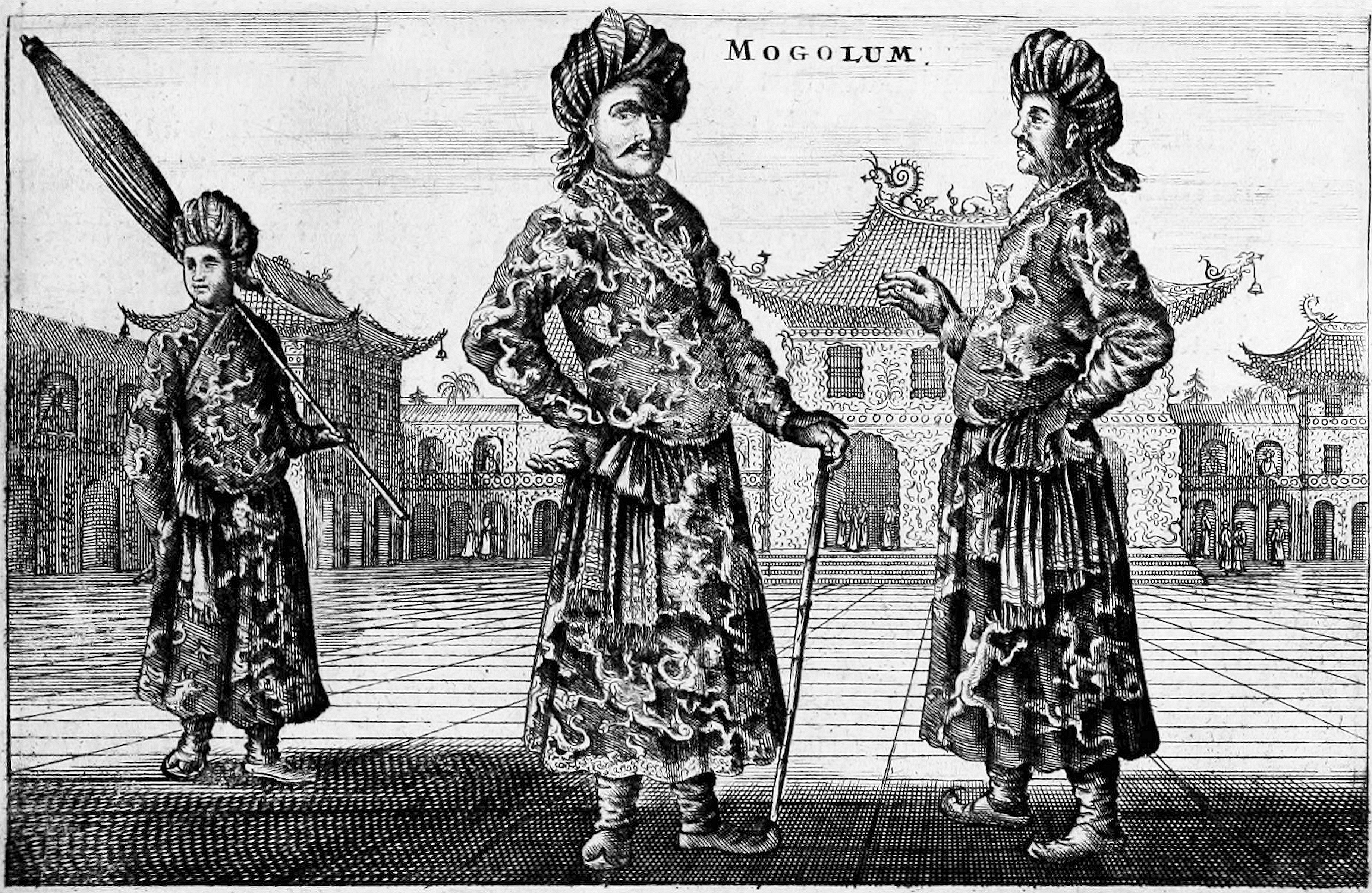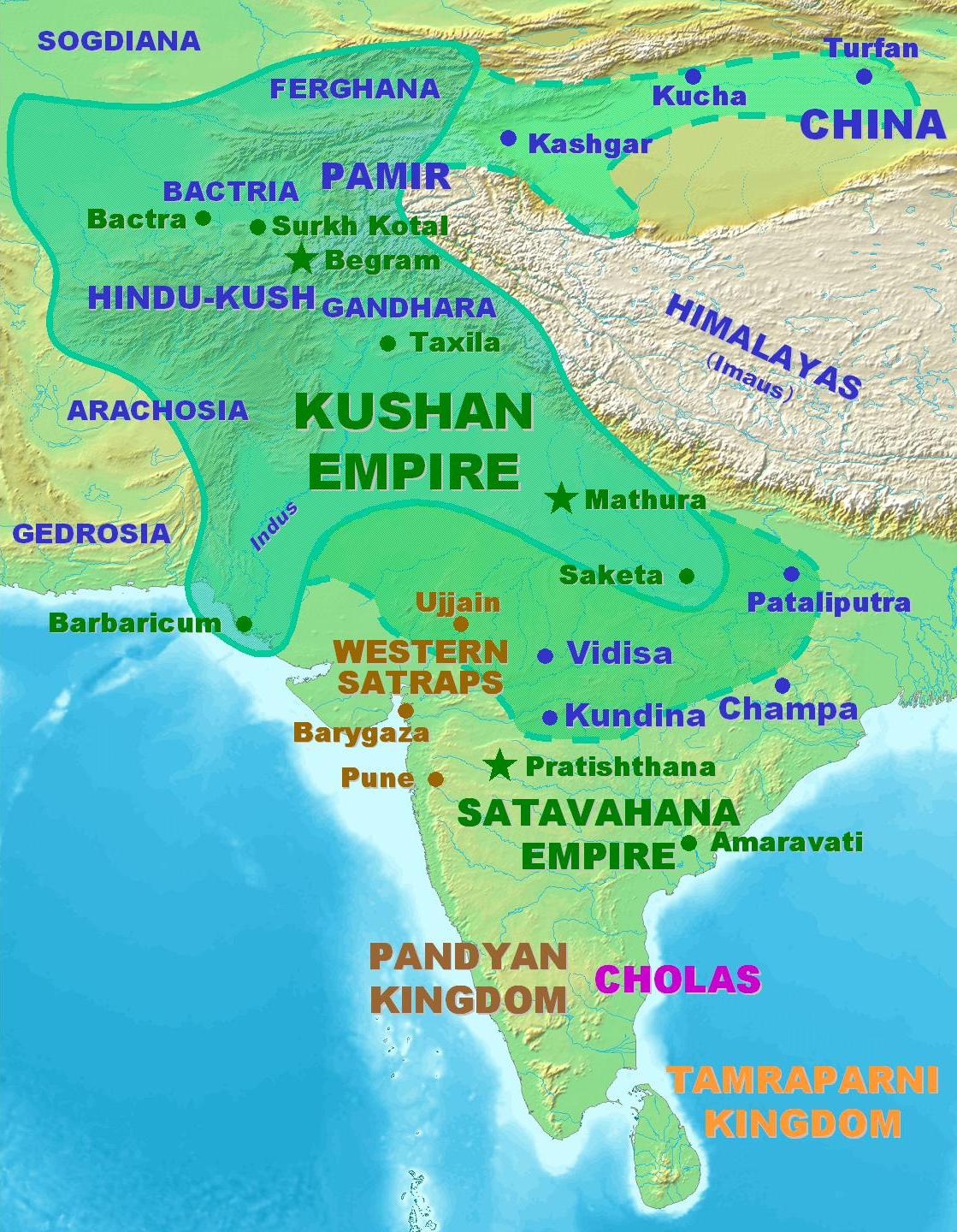|
Dughlats
The Dughlat clan (; Mongolian language, Mongolian: ''List of modern Mongolian clans#D, Dolood/sevens, Doloo/seven; Middle Mongolian: Doluga, Dolugad''; Dulğat; ) was a Mongol (later Turko-Mongol) clan that served the Chagatai khans as hereditary vassal rulers of several cities in western Tarim Basin, in modern Xinjiang, from the 14th century until the 16th century. The most famous member of the clan, Mirza Muhammad Haidar Dughlat, Mirza Muhammad Haidar, was a military adventurer, historian, and the ruler of Kashmir (1541–1551). His historical work, the ''Tarikh-i Rashidi'', provides much of the information known about the family. History Early history The Dughlat tribe is mentioned as having supported Genghis Khan during his creation of the Mongol Empire in the early 13th century. Rashid al-Din Hamadani identifies the Dughlad (Dughlat) as a minor tribe of the Mongols. At an early date the entire tribe moved out of Mongolia and eventually settled in the area comprising the Chaga ... [...More Info...] [...Related Items...] OR: [Wikipedia] [Google] [Baidu] |
Moghulistan
Moghulistan, also called the Moghul Khanate or the Eastern Chagatai Khanate, was a Muslims, Muslim, Mongol, and later Turkic peoples, Turkic breakaway khanate of the Chagatai Khanate and a historical geographic area north of the Tian Shan, Tengri Tagh mountain range, on the border of Central Asia and East Asia. That area today includes parts of Kazakhstan, Kyrgyzstan, and northwest Xinjiang, China. The khanate nominally ruled over the area from the mid-14th century until the late 17th century. Beginning in the mid-14th century a new khanate, in the form of a nomadic tribal confederacy headed by a member of the family of Chagatai, arose in the region of the Ili River. It is therefore considered to be a continuation of the Chagatai Khanate, but it is also referred to as the ''Moghul Khanate''. In actuality, local control rested with local Mongol Dughlats or Naqshbandi Sufis in their respective oases. Although the rulers enjoyed great wealth from trade with the Ming dynasty, it wa ... [...More Info...] [...Related Items...] OR: [Wikipedia] [Google] [Baidu] |
Yarkand
Yarkant County,, National Geospatial-Intelligence Agency, United States National Geospatial-Intelligence Agency also Shache County,, National Geospatial-Intelligence Agency, United States National Geospatial-Intelligence Agency also SASM/GNC romanization#Uyghur, transliterated from Uyghur as Yakan County, is a county in the Xinjiang, Xinjiang Uyghur Autonomous Region, China, located on the southern rim of the Taklamakan Desert in the Tarim Basin. It is one of 11 counties administered under Kashgar Prefecture. The county, usually referred to as Yarkand in English language, English, was the seat of an ancient Buddhism, Buddhist kingdom on the southern branch of the Silk Road and the Yarkand Khanate. The county sits at an altitude of and had a population of . The fertile oasis is fed by the Yarkand River, which flows north down from the Karakorum Mountains, Karakorum mountains and passes through the Kunlun Mountains, known historically as the Congling mountains (lit. 'Onion Mount ... [...More Info...] [...Related Items...] OR: [Wikipedia] [Google] [Baidu] |
Chagatai Khanate
The Chagatai Khanate, also known as the Chagatai Ulus, was a Mongol and later Turkification, Turkicized khanate that comprised the lands ruled by Chagatai Khan, second son of Genghis Khan, and his descendants and successors. At its height in the late 13th century the khanate extended from the Amu Darya south of the Aral Sea to the Altai Mountains in the border of modern-day Mongolia and China, roughly corresponding to the area once ruled by the Qara Khitai (Western Liao dynasty). Initially, the rulers of the Chagatai Khanate recognized the supremacy of the Great Khan, but by the reign of Kublai Khan, Ghiyas-ud-din Baraq no longer obeyed the emperor's orders. From 1363, the Chagatais progressively lost Transoxiana to the Timurids. The reduced realm came to be known as Moghulistan, which lasted until the late 15th century, when it broke off into the Yarkent Khanate and Turpan Khanate. In 1680, the remaining Chagatai domains lost their independence to the Dzungar Khanate. Finally, the ... [...More Info...] [...Related Items...] OR: [Wikipedia] [Google] [Baidu] |
Yarkent Khanate
The Yarkent Khanate, also known as the Yarkand Khanate and the Kashghar Khanate, was a Sunni Muslim Turkic peoples, Turkic state ruled by the Mongols, Mongol descendants of Chagatai Khan. It was founded by Sultan Said Khan in 1514 as a western offshoot of Moghulistan, itself an eastern offshoot of the Chagatai Khanate. It was eventually conquered by the Dzungar Khanate in 1705. Capital Yarkant County, Yarkent served as the capital of the Yarkent Khanate, which was also known as the Yarkent State (''Mamlakati Yarkand''), from the establishment of the Khanate (1514 AD) to its fall (1705 AD). The previous Dughlat state of Mirza Abu Bakr Dughlat (1465–1514) of Kashgar Prefecture, Kashgaria also used Yarkant County, Yarkent as the capital of state. History Background The Khanate was predominantly Uyghurs, Uyghur/Turki; some of its most populated cities were Hotan, Yarkand County, Yarkent, Kashgar, Yengisar County, Yangihissar, Aksu, Xinjiang, Aksu, Uchturpan County, Uchturpan, ... [...More Info...] [...Related Items...] OR: [Wikipedia] [Google] [Baidu] |
Tarim Basin
The Tarim Basin is an endorheic basin in Xinjiang, Northwestern China occupying an area of about and one of the largest basins in Northwest China.Chen, Yaning, et al. "Regional climate change and its effects on river runoff in the Tarim Basin, China." Hydrological Processes 20.10 (2006): 2207–2216.online 426 KB) Located in China's Xinjiang region, it is sometimes used synonymously to refer to the southern half of the province, that is, Southern Xinjiang or Nanjiang (), as opposed to the northern half of the province known as Dzungaria or Beijiang. Its northern boundary is the Tian Shan mountain range and its southern boundary is the Kunlun Mountains on the edge of the Tibetan Plateau. The Taklamakan Desert dominates much of the basin. The historical Uyghur name for the Tarim Basin is Altishahr (Uyghur language, Traditional Uyghur: , ), which means 'six cities' in Uyghur language, Uyghur. The region was also called ''Little Bukhara'' or ''Little Bukharia''. Geography and relation ... [...More Info...] [...Related Items...] OR: [Wikipedia] [Google] [Baidu] |
Mirza Muhammad Haidar Dughlat
Mirza Muhammad Haidar Dughlat Beg (; c. 1499/1500 – 1551) was a Chagatai Turco-Mongol military general, governor of Kashmir, and a historian. He was a Mughal Dughlat prince who wrote in both Chaghatai and Persian languages. Haidar and Babur were first-degree cousins on their mother's side (they had the same grandfather Yunus Khan), both belonging to the line of Genghis Khan. Unlike Babur, Haidar considered himself more of an ethnic Mongol of Moghulistan. Background Mirza Haidar Dughlat Beg in the Tarikh-i Rashidi constantly alludes to a distinct tribe or community of Moghuls in Mughalistan, however reduced in numbers, who had preserved Mongol customs, and from the incidental references to Mongolian phrases and terms, likely retained elements of the original Mongolian language, despite the growth of Islam and the growing use of the Turki language, the latter which Haider naturally spoke. According to the Tarikh-i Rashidi, Haider Dughlat considered his "Moghul Ulus" to b ... [...More Info...] [...Related Items...] OR: [Wikipedia] [Google] [Baidu] |
Xinjiang
Xinjiang,; , SASM/GNC romanization, SASM/GNC: Chinese postal romanization, previously romanized as Sinkiang, officially the Xinjiang Uygur Autonomous Region (XUAR), is an Autonomous regions of China, autonomous region of the China, People's Republic of China (PRC), located in the Northwest China, northwest of the country at the crossroads of Central Asia and East Asia. Being the List of Chinese administrative divisions by area, largest province-level division of China by area and the List of the largest country subdivisions by area, 8th-largest country subdivision in the world, Xinjiang spans over and has about 25 million inhabitants. Xinjiang Borders of China, borders the countries of Afghanistan, India, Kazakhstan, Kyrgyzstan, Mongolia, Pakistan, Russia, and Tajikistan. The rugged Karakoram, Kunlun Mountains, Kunlun and Tian Shan mountain ranges occupy much of Xinjiang's borders, as well as its western and southern regions. The Aksai Chin and Trans-Karakoram Tract regions ... [...More Info...] [...Related Items...] OR: [Wikipedia] [Google] [Baidu] |
List Of Medieval Mongol Tribes And Clans
The qualifier Mongol tribes was established as an umbrella term in the early 13th century, when Temüjin (later Genghis Khan) united the different tribes under his control and established the Mongol Empire. There were 19 Nirun tribes (marked (N) in the list) that descended from Bodonchar and 18 Darligin tribes (marked (D) in the list), which were also core Mongolic tribes but not descending from Bodonchar. The unification created a new common ethnic identity as Mongols. Descendants of those clans form the Mongolian nation and other Inner Asian people. Almost all of tribes and clans mentioned in the ''Secret History of the Mongols'' and some tribes mentioned in the Tarikh-i-Rashidi, there are total 33 Mongol tribes. Core Mongolic tribes * *Khorilar *Dorben (N) * Uriankhat *Ma'alikh baya'ut (D) * Jarchi'ut Adangkhan (D) *Belgunot *Buyant *Bugunot *Khatagin (N) *Eljigin *Salji'ut **Jadaran (N) ** Baarin (N) **Manan Ba'arin ** Jaruud ***Noyakin (N) ***Barulas (N) ***Buda'at ... [...More Info...] [...Related Items...] OR: [Wikipedia] [Google] [Baidu] |
List Of Modern Mongolian Clans
*This is a list of modern Mongol clans. Khalkha clans A Aduuchin B Barga; Barlas, Barulas; Borjigin; Besud; Belej/Balj; Buyant C D Daguur (Khitans); Dolood (Dughlats) E Eljigin H Hatagin, Hurts (Khurts) J *Jalair Jurkhin G Gorlos H Harnut Kharchu Khatagin J Jalaid ( Jalairs) Jurkhin N Naiman, Nirun O Olkhonud (Olkhunut) Sh Saljiud, Sharnud (Sharaid) T Taijiud or Taijuud, Tatar, Togoruutan Torghut Ts Tsoros ( Choros people) Y Yamaat; Yunsheebuu (Southern Mongols) Buryat clans A Atagan S Sunud B Bodonguud Daur clans D Daguur; Dular Hamnigan clans Altanhan (Mongol); Huuchid (Mongol) Oirat clans Bayad clans The Bayad (Mongol: Баяд/Bayad, lit. "the Riches") is the third largest subgroup of the Mongols in Mongolia and they are a tribe in Four Oirats. Bayads were a prominent clan within the Mongol Empire. Bayads can be found in both Mongolic and Turkic peoples. Within Mongols, the clan is spread through Khalkha, Inner Mongolians, Buryats and Oi ... [...More Info...] [...Related Items...] OR: [Wikipedia] [Google] [Baidu] |
Kashgar
Kashgar () or Kashi ( zh, c=喀什) is a city in the Tarim Basin region of southern Xinjiang, China. It is one of the westernmost cities of China, located near the country's border with Kyrgyzstan and Tajikistan. For over 2,000 years, Kashgar was a strategically important oasis on the Silk Road between China, the Middle East, and Europe. It is one of the oldest continuously inhabited cities in the world and has a population of 711,300 people (). Kashgar's urban area covers , although its administrative area extends over . At the convergence point of widely varying cultures and empires, Kashgar has been under the rule of the Chinese, Turkic, Mongol and Tibetan empires. The city has also been the site of a number of battles between various groups of people on the steppes. Now administered as a county-level city, Kashgar is the administrative centre of Kashgar Prefecture, which has an area of and a population of approximately 4 million . Kashgar was declared a Special Economic ... [...More Info...] [...Related Items...] OR: [Wikipedia] [Google] [Baidu] |
Middle Mongolian
Middle Mongol or Middle Mongolian was a Mongolic languages, Mongolic koiné language spoken in the Mongol Empire. Originating from Genghis Khan's home region of Northeastern Mongolia, it diversified into several Mongolic languages after the collapse of the empire. In comparison to Mongolian language, Modern Mongolian, it is known to have had no Vowel length, long vowels, different vowel harmony and verbal systems and a slightly different case system. Definition and historical predecessors Middle Mongolian closely resembles Proto-Mongolic, the reconstructed last common ancestor of the modern Mongolic languages, which dates it to shortly after the time when Genghis Khan united a number of tribes under his command and formed the Khamag Mongol. The term "Middle Mongol" or "Middle Mongolian" is somewhat misleading, since it is the earliest directly-attested (as opposed to reconstructed) ancestor of Modern Mongolian, and would therefore be termed "Old Mongolian" under the usual conve ... [...More Info...] [...Related Items...] OR: [Wikipedia] [Google] [Baidu] |









